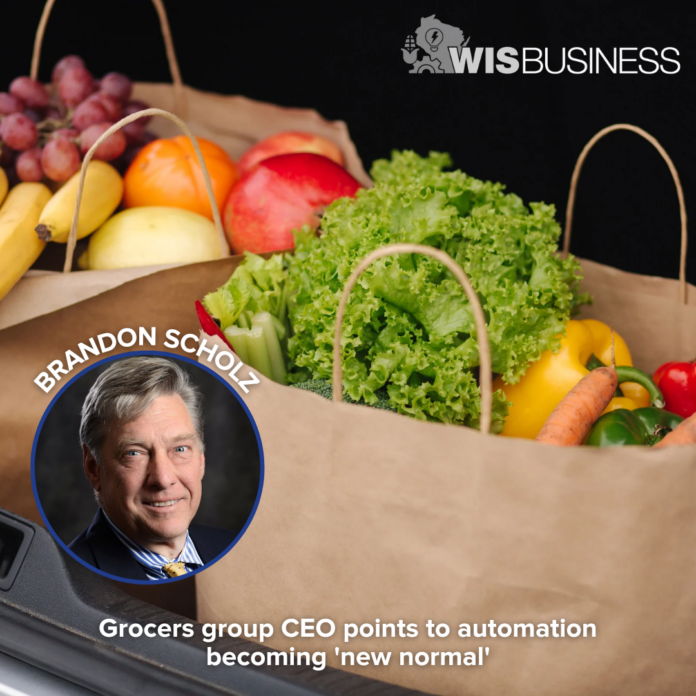Grocery store customers should expect to see more self-checkout lanes and robots doing stocking and inventory tasks, according to the head of the Wisconsin Grocers Association.
In a message published recently by the Wisconsin Bankers Association’s Wisconsin Economic Report, WGA President and CEO Brandon Scholz said the pandemic-driven higher inflation rates are “still crushing food and grocery prices” even though inflation has returned to “familiar rates” near 3%.
In the four years since the start of the COVID-19 pandemic, most grocery store products have seen a price increase of at least 3.2%, Scholz wrote in his message, drawing on figures from the U.S. Bureau of Labor Statistics.
“Here’s the kicker: consumers expect prices on the shelves to decrease accordingly when they hear reports that inflation has subsided back down to ‘normal’ levels,” he wrote. “That’s not going to happen real soon.”
He notes wages and other workforce factors, as well as energy costs, are playing a role in grocery prices. No “magic formula” exists that shows prices will fall as inflation decreases, according to Scholz. He adds the USDA projects grocery prices could increase by another 1% this year.
And though every industry is grappling with the same workforce shortage, the retail food sector hasn’t “seen the return of the workforce to the levels needed to operate efficiently,” Scholz says. Plus, he notes the increases in wages and benefits that occurred during the pandemic haven’t reversed at all, putting continued financial pressure on employers.
As shoppers navigate the higher prices at their local grocery stores, they’re expected to spend less on “indulgent” items and make fewer trips while buying in bulk more often. Aside from special events and holidays, Scholz says consumers are expected to continue to shop based on price throughout 2024.
As this behavior plays out, they may notice “subtle changes” in stores as the industry reacts to ongoing challenges, he wrote.
“Without a full workforce, empty checkout lanes will be converted to self-checkout stations and shoppers may start to see robots in the aisles working on stocking and inventory,” he said, adding automation in the grocery industry “has the potential to become a new normal.”
See the full economic report, including perspectives from other industry association leaders: https://www.wisbank.com/wp-content/uploads/2023/12/Wisconsin-Economic-Reports-2024.pdf
–By Alex Moe






